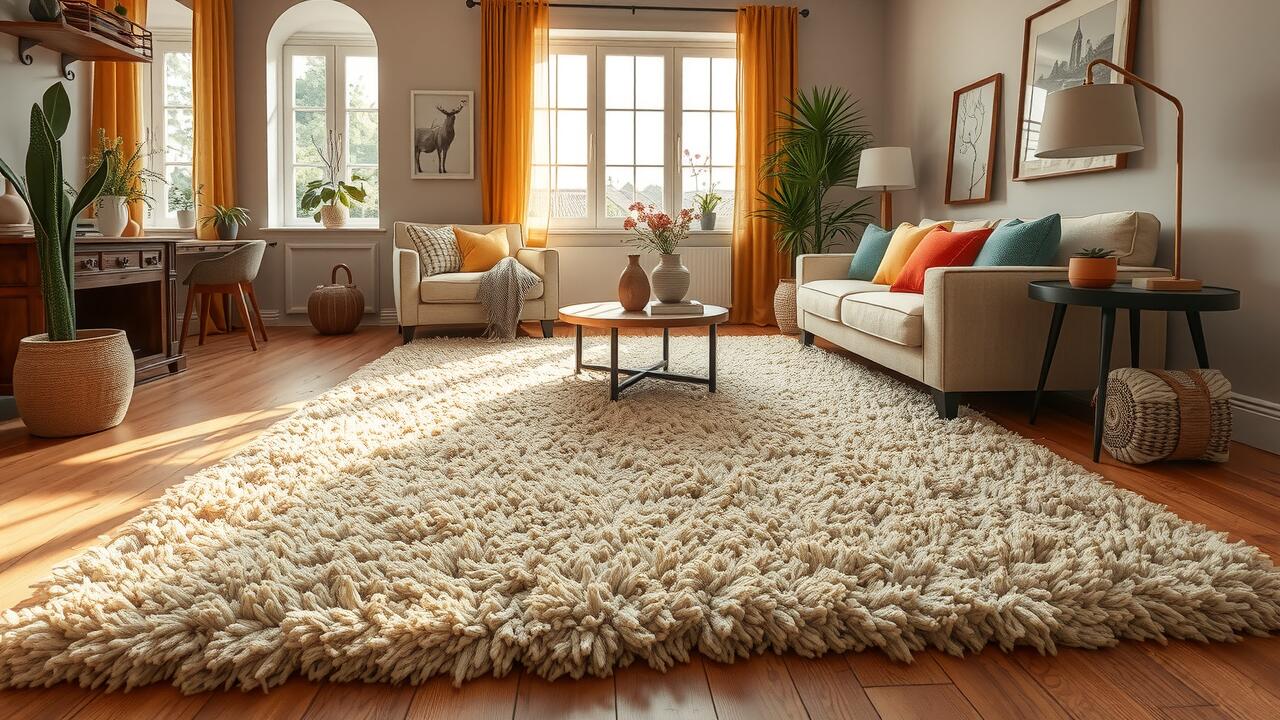
Table Of Contents
Synthetic Rugs
The popularity of synthetic rugs has surged due to their affordability and versatility. Materials like nylon, polypropylene, and polyester dominate this category. These rugs are often resistant to stains and fading, making them suitable for high-traffic areas. However, the manufacturing process of synthetic fibers can raise concerns regarding indoor air quality. Many synthetic rugs release volatile organic compounds (VOCs) after installation, potentially posing health risks.
Homeowners must also consider the impact of synthetic materials on allergies. While these rugs can be easier to clean and maintain compared to natural fibers, they may not be the best choice for individuals with respiratory issues. The fine fibers in synthetic rugs can trap dust, pet dander, and other allergens. Regular cleaning is essential to minimize these triggers and ensure a healthier indoor environment.
Evaluating Common Materials
When assessing rug materials, natural fibers such as wool, cotton, and jute are often considered healthier options. Wool, in particular, possesses antibacterial properties and is hypoallergenic, making it suitable for individuals with sensitivities. Cotton and jute are also breathable and biodegradable, which adds to their appeal for eco-conscious consumers.
On the other hand, synthetic materials like nylon and polyester present different health considerations. While these rugs tend to be more durable and stain-resistant, they can harbor allergens and release volatile organic compounds (VOCs). Choosing organic or treated synthetic options may mitigate some of these concerns, but it is essential to consider the long-term effects on indoor air quality when making a decision.
Allergies and Rug Materials
Certain rug materials can exacerbate allergies due to their propensity to trap dust, pet dander, and other allergens. Natural fibers like wool and cotton, while biodegradable and aesthetically pleasing, can hold onto these irritants more than synthetic options. Synthetic rugs, made from materials like nylon or polyester, are often designed to repel stains and resist moisture. This quality can help minimize allergen accumulation, making them a preferable choice for allergy sufferers.
Understanding how specific materials interact with indoor air quality is essential for maintaining a healthy environment. Rugs with tightly woven surfaces tend to collect less dust and are easier to clean. Regular vacuuming and the use of air purifiers can significantly reduce airborne allergens, contributing to a healthier home atmosphere. Choosing the right material plays a crucial role in managing allergy symptoms and ensuring comfort in living spaces.
Minimizing Allergy Triggers
Selecting rugs made from hypoallergenic materials can significantly reduce allergy triggers in the home. Natural fibers such as wool, cotton, and jute are less likely to harbor dust mites and mold compared to synthetic options. These materials also allow for better airflow, which can help minimize the accumulation of allergens over time.
Regular cleaning and maintenance of rugs are essential in managing allergies. Vacuuming frequently with a HEPA filter helps capture microscopic particles that settle into the fibers. Additionally, washing rugs that are machine washable or seeking professional cleaning for larger items can further reduce allergens and maintain a healthier environment.
Maintenance of Healthy Rugs
Maintaining healthy rugs requires a consistent cleaning routine to prevent the buildup of allergens and dirt. Regular vacuuming plays a crucial role in this process, as it removes dust, pet dander, and other particles that can accumulate over time. For deeper cleaning, professional steam cleaning is recommended at least once a year. This method not only sanitizes the rug but also refreshes its appearance.
In addition to vacuuming and steam cleaning, prompt attention to spills and stains is vital. Accidents can lead to permanent damage or mold growth if not addressed immediately. Using mild cleaning solutions is advisable to avoid harsh chemicals that may linger in the fibers. Incorporating an area rug pad can help prevent slipping and reduces wear on the rug, ensuring longevity and ongoing cleanliness.
Cleaning and Care Tips
Regular cleaning is essential for maintaining the health of your rug. Vacuuming should be done weekly to remove dust and allergens that accumulate over time. For rugs made of natural fibers, gentle vacuuming helps preserve their integrity. Spot cleaning with a mild detergent can address stains without damaging the material.
Periodic deep cleaning is also advisable, as it helps eliminate trapped dirt and bacteria. Depending on the material, professional cleaning may be the best choice, especially for delicate fabrics. Always check the care instructions specific to your rug to avoid using harsh chemicals or methods that could harm it. Regular maintenance not only enhances the appearance of the rug but also promotes a healthier living environment.
FAQS
What materials are considered the healthiest for rugs?
Natural fibers such as wool, cotton, jute, and sisal are often considered the healthiest materials for rugs. They are less likely to harbor allergens and are more environmentally friendly compared to synthetic options.
Are synthetic rugs harmful to health?
Synthetic rugs can sometimes contain chemicals that may off-gas volatile organic compounds (VOCs), which can be harmful to indoor air quality. However, many modern synthetic rugs are made with low-VOC materials and are treated to be safer for use in homes.
How can rug materials affect allergy sufferers?
Certain materials can trigger allergies, such as those made from synthetic fibers that trap dust and allergens. Natural fibers, on the other hand, tend to be more breathable and less likely to accumulate allergens, making them a better choice for allergy sufferers.
What cleaning methods help maintain a healthy rug?
Regular vacuuming, spot cleaning with natural cleaners, and professional deep cleaning can help maintain a healthy rug. Avoid harsh chemicals and opt for eco-friendly cleaning solutions to keep indoor air quality safe.
How often should I clean my rugs to keep them healthy?
It is recommended to vacuum rugs at least once a week and to have them professionally cleaned every 6 to 12 months, depending on usage and traffic. Regular maintenance is key to preventing the buildup of allergens and maintaining a healthy environment.